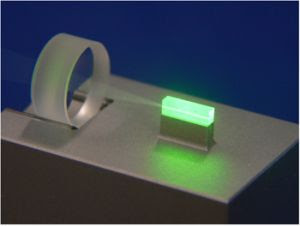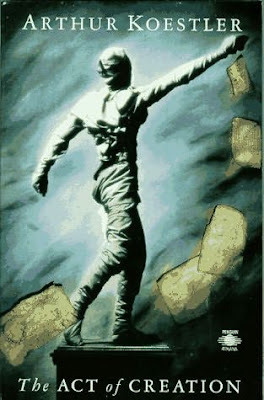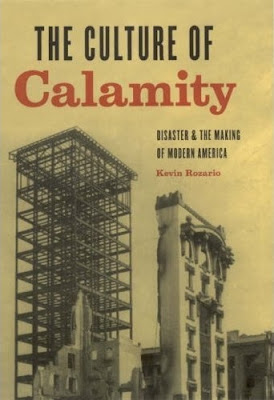 "More than a quarter of iPhones sold in the US have been "unlocked" to work on network providers other than Apple's exclusive partner AT&T, a study says."
"More than a quarter of iPhones sold in the US have been "unlocked" to work on network providers other than Apple's exclusive partner AT&T, a study says."Nature finds a way - Jurassic Park
 "...the plague (Black Death of 1347 to 1351) selectively took the already ill, while many of the otherwise healthy survived the infection.
"...the plague (Black Death of 1347 to 1351) selectively took the already ill, while many of the otherwise healthy survived the infection. Successfully detecting vanishingly weak Gravity Waves has been a long standing quest as they are envisioned to be the mechanism which enables gravity to bend space and time as postulated by General Relativity in explaining how reality works at the large scale of things. (1919 eclipse experiment)
Successfully detecting vanishingly weak Gravity Waves has been a long standing quest as they are envisioned to be the mechanism which enables gravity to bend space and time as postulated by General Relativity in explaining how reality works at the large scale of things. (1919 eclipse experiment) Successful Gravity Wave detection could be at hand because output of the Lowest Noise Laser "...results in a reduction in the quantum mechanical intensity fluctuations, known as photon noise, of 90 percent. Using this extremely quite light in gravitational wave detectors can drastically increase their sensitivity."
Successful Gravity Wave detection could be at hand because output of the Lowest Noise Laser "...results in a reduction in the quantum mechanical intensity fluctuations, known as photon noise, of 90 percent. Using this extremely quite light in gravitational wave detectors can drastically increase their sensitivity."

 "Researchers in the US claim to have made the world's darkest material using arrays of carbon nanotubes.The new material reflects just 0.045% of light incident upon it, making it blacker than the previous record holder — a nickel and phosphorous alloy that reflected about 0.16% of incident light. The material could be used to boost the efficiency of solar panels."
"Researchers in the US claim to have made the world's darkest material using arrays of carbon nanotubes.The new material reflects just 0.045% of light incident upon it, making it blacker than the previous record holder — a nickel and phosphorous alloy that reflected about 0.16% of incident light. The material could be used to boost the efficiency of solar panels." To get an idea of just how dark this material is, consider this "The total reflectance of conventional black paint, for example, is between 5 and 10 percent. The darkest manmade material, prior to the discovery by Lin’s group, boasted a total reflectance of 0.16 percent to 0.18 percent.
To get an idea of just how dark this material is, consider this "The total reflectance of conventional black paint, for example, is between 5 and 10 percent. The darkest manmade material, prior to the discovery by Lin’s group, boasted a total reflectance of 0.16 percent to 0.18 percent.
 Unlike Burt Bacharach and Hal David's classic, Raindrops (Butch Cassidy & The Sundance Kid) where Kathleen Ross rides a bike while the song lightly intones various ways to deal with the rain, "Researchers have recently developed a system that recovers the vibration energy from a piezoelectric structure impacted by a falling raindrop. The system works with raindrops ranging in diameter from 1 to 5 mm, and simulations show that it’s possible to recover up to 12 milliwatts from one of the larger “downpour” drops."
Unlike Burt Bacharach and Hal David's classic, Raindrops (Butch Cassidy & The Sundance Kid) where Kathleen Ross rides a bike while the song lightly intones various ways to deal with the rain, "Researchers have recently developed a system that recovers the vibration energy from a piezoelectric structure impacted by a falling raindrop. The system works with raindrops ranging in diameter from 1 to 5 mm, and simulations show that it’s possible to recover up to 12 milliwatts from one of the larger “downpour” drops." "A bacterium (plural: bacteria) is a unicellular microorganism."
"A bacterium (plural: bacteria) is a unicellular microorganism."

 Just saw the monster flick Cloverfield. Good special effects (monsters are intense), proper level of dread, and, for once, a real sense of what happens when people confront the frightening unknown up close and personal. Using hi def hand held cameras, director Matt Reeves achieves the kind of "you are participating in a chaotic event writ large" feeling impossible to achieve using the usual steady cams, tripods or dollies to control how cameras record a scene.
Just saw the monster flick Cloverfield. Good special effects (monsters are intense), proper level of dread, and, for once, a real sense of what happens when people confront the frightening unknown up close and personal. Using hi def hand held cameras, director Matt Reeves achieves the kind of "you are participating in a chaotic event writ large" feeling impossible to achieve using the usual steady cams, tripods or dollies to control how cameras record a scene.

 Diatoms, a common member of Phytoplankton, are not only commonplace to the extreme, (oceans/freshwater streams/soils/damp surfaces) they also differ from all other organisms because they "are encased within a unique cell wall made of silica (hydrated silicon dioxide) called a frustule."
Diatoms, a common member of Phytoplankton, are not only commonplace to the extreme, (oceans/freshwater streams/soils/damp surfaces) they also differ from all other organisms because they "are encased within a unique cell wall made of silica (hydrated silicon dioxide) called a frustule." Using this data, scientists may be able to program diatoms to build chips that are much faster and smaller in size, thus avoiding the limits of Moore's Law "as diatoms are capable of producing lines much smaller than current technology allows."
Using this data, scientists may be able to program diatoms to build chips that are much faster and smaller in size, thus avoiding the limits of Moore's Law "as diatoms are capable of producing lines much smaller than current technology allows." MIT Open Courseware has reached a milestone. All 1800 courses are now online. Additionally, OCW has opened Highlights for High School, a selection of OCW courses keyed to high school students. Click on the image below to view the Highlights video to learn how this environment will unlock the minds of the young.
MIT Open Courseware has reached a milestone. All 1800 courses are now online. Additionally, OCW has opened Highlights for High School, a selection of OCW courses keyed to high school students. Click on the image below to view the Highlights video to learn how this environment will unlock the minds of the young. Pretty cool news don't you think?
Pretty cool news don't you think? Just read a great article from James Howard Kunstler, the author of The Long Emergency, titled Disarray "I maintain that all the "players" -- from the bankers to the politicians to the editors to the ordinary citizens -- will continue to not get it as the disarray accelerates and families and communities are blown apart by economic loss. Instead of beginning the tough process of making new arrangements for everyday life, we'll take up a campaign to sustain the unsustainable old way of life at all costs."
Just read a great article from James Howard Kunstler, the author of The Long Emergency, titled Disarray "I maintain that all the "players" -- from the bankers to the politicians to the editors to the ordinary citizens -- will continue to not get it as the disarray accelerates and families and communities are blown apart by economic loss. Instead of beginning the tough process of making new arrangements for everyday life, we'll take up a campaign to sustain the unsustainable old way of life at all costs."
 Network:
Network: Now, Bush, our Debt Junkie-in-Chief, needs another fix. The US Treasury, Citibank, Merrill-Lynch and other financial desperados need another hand-out from Abdullah’s stash. Abdullah, in turn, gets this financial juice by pumping it out of our pockets at nearly $100 a barrel for his crude."
Now, Bush, our Debt Junkie-in-Chief, needs another fix. The US Treasury, Citibank, Merrill-Lynch and other financial desperados need another hand-out from Abdullah’s stash. Abdullah, in turn, gets this financial juice by pumping it out of our pockets at nearly $100 a barrel for his crude." Last but not least, read the insightful Economist article All Fall Down? to learn about a little known but huge sector of America's markets that could also go bust along with this gem titled Is This the Big One? It's sure to warm the cockles of your heart.
Last but not least, read the insightful Economist article All Fall Down? to learn about a little known but huge sector of America's markets that could also go bust along with this gem titled Is This the Big One? It's sure to warm the cockles of your heart.
 The Act of Creation "..uncovers, selects, re-shuffles, combines, synthesizes already existing facts, ideas, faculties, skills. The more familiar the parts, the more striking the new whole."
The Act of Creation "..uncovers, selects, re-shuffles, combines, synthesizes already existing facts, ideas, faculties, skills. The more familiar the parts, the more striking the new whole."  "He (Kekulé) said that he had discovered the ring shape of the benzene molecule after having a reverie or day-dream of a snake seizing its own tail (this is a common symbol in many ancient cultures known as the (Ouroboros)."
"He (Kekulé) said that he had discovered the ring shape of the benzene molecule after having a reverie or day-dream of a snake seizing its own tail (this is a common symbol in many ancient cultures known as the (Ouroboros)." Patrick Buchanan is no hero of mine but the man's very smart and his take on some aspects of US policy and economics is right on as seen in his article Subprime Nation.
Patrick Buchanan is no hero of mine but the man's very smart and his take on some aspects of US policy and economics is right on as seen in his article Subprime Nation. "Researchers believe the pipettes will be useful for concurrently measuring electrical signals of cells during fluid injection. In addition, the pipettes are transparent to X rays and electrons, making them useful when imaging even at the molecular level. Adding a functionalized protein to the pipette creates a nanoscale biosensor that can detect the presence of proteins."
"Researchers believe the pipettes will be useful for concurrently measuring electrical signals of cells during fluid injection. In addition, the pipettes are transparent to X rays and electrons, making them useful when imaging even at the molecular level. Adding a functionalized protein to the pipette creates a nanoscale biosensor that can detect the presence of proteins." According to the Washington Post, the US Embassy in Iraq, the largest in the world, appears to have some problems. "The fire systems are the tip of the iceberg. That is the most visible. But no one has ever inspected the electrical system, the power plant" and other parts of the embassy complex, which will house more than 1,000 people and is vulnerable to mortar attacks."
According to the Washington Post, the US Embassy in Iraq, the largest in the world, appears to have some problems. "The fire systems are the tip of the iceberg. That is the most visible. But no one has ever inspected the electrical system, the power plant" and other parts of the embassy complex, which will house more than 1,000 people and is vulnerable to mortar attacks." Telecommunications companies have repeatedly cut off FBI access to wiretaps of alleged terrorists and criminal suspects because the bureau did not pay its phone bills, according to the results of an audit released yesterday.
Telecommunications companies have repeatedly cut off FBI access to wiretaps of alleged terrorists and criminal suspects because the bureau did not pay its phone bills, according to the results of an audit released yesterday. 
 Nobel laureate Peter Medawar called On Growth and Form "the finest work of literature in all the annals of science that have been recorded in the English tongue"
Nobel laureate Peter Medawar called On Growth and Form "the finest work of literature in all the annals of science that have been recorded in the English tongue"
 "When Indian researcher Sugata Mitra embedded a high-speed computer in a wall separating his firm's New Delhi headquarters from an adjacent slum, he discovered that slum children quickly taught themselves how to surf the net, read the news, and download games and music. Mitra then replicated the experiment in other locations. Each time the results were similar: within hours, and without instruction, the children began browsing the Internet."
"When Indian researcher Sugata Mitra embedded a high-speed computer in a wall separating his firm's New Delhi headquarters from an adjacent slum, he discovered that slum children quickly taught themselves how to surf the net, read the news, and download games and music. Mitra then replicated the experiment in other locations. Each time the results were similar: within hours, and without instruction, the children began browsing the Internet." Out of hand, out of sight approach to Tech.
Out of hand, out of sight approach to Tech. Though somewhat tongue in cheek, the excellent Salon article titled How to Solve America's Water Problems pulls no punches in stating we are in big trouble in the H20 scheme of things. "In San Diego, which just experienced its driest summer in recorded history, the hills are charred from October's wildfires. The state of California is so tapped out that the pumps that carry water from the Sacramento River to San Diego were tightened in December. Water authorities are urging San Diegans to tear up their grass and replace it with cactus and succulent."
Though somewhat tongue in cheek, the excellent Salon article titled How to Solve America's Water Problems pulls no punches in stating we are in big trouble in the H20 scheme of things. "In San Diego, which just experienced its driest summer in recorded history, the hills are charred from October's wildfires. The state of California is so tapped out that the pumps that carry water from the Sacramento River to San Diego were tightened in December. Water authorities are urging San Diegans to tear up their grass and replace it with cactus and succulent." To get a better idea of the current situation in the US, click on the image above to get the NDIS (National Integrated Drought Information System) take on this grave problem.
To get a better idea of the current situation in the US, click on the image above to get the NDIS (National Integrated Drought Information System) take on this grave problem. Don't you feel better now?
Don't you feel better now?
 Have not read Culture of Calamity yet but in Alternet, there is a terrific interview with the author, Kevin Rozario, where he "explores the role that massive catastrophe has played in American culture. Why did the stock market radically jump despite the prediction of thousands of jobs lost in Hurricane Katrina? Who benefits from disasters? How did it come to be that, in the wake of 9/11, an average of $2.1 million in tax-free payments were made to the families of those killed in the attacks? Why are mainstream media outlets inundated with images of destruction?"
Have not read Culture of Calamity yet but in Alternet, there is a terrific interview with the author, Kevin Rozario, where he "explores the role that massive catastrophe has played in American culture. Why did the stock market radically jump despite the prediction of thousands of jobs lost in Hurricane Katrina? Who benefits from disasters? How did it come to be that, in the wake of 9/11, an average of $2.1 million in tax-free payments were made to the families of those killed in the attacks? Why are mainstream media outlets inundated with images of destruction?" When e-paper is combined with Bluetooth, WiMax and a (cleverly disguised) PC, Disruptive Tech emerges in the form of the Napkin PC, an elegant, low powered approach to group collaboration that could change how creativity and education functions.
When e-paper is combined with Bluetooth, WiMax and a (cleverly disguised) PC, Disruptive Tech emerges in the form of the Napkin PC, an elegant, low powered approach to group collaboration that could change how creativity and education functions. Knowing the Human Genome is not enough, man also has to learn about the myriad of beasties that live within us to to better understand how they impact the health of everyone on planet earth.
Knowing the Human Genome is not enough, man also has to learn about the myriad of beasties that live within us to to better understand how they impact the health of everyone on planet earth.
 When one browses the net as often as I do, one finds gems that are too good to pass up. Motion Mountain is such a jewel, a free, up to date book on physics. Some of the questions posed by Christoph Schiller include the following:
When one browses the net as often as I do, one finds gems that are too good to pass up. Motion Mountain is such a jewel, a free, up to date book on physics. Some of the questions posed by Christoph Schiller include the following: